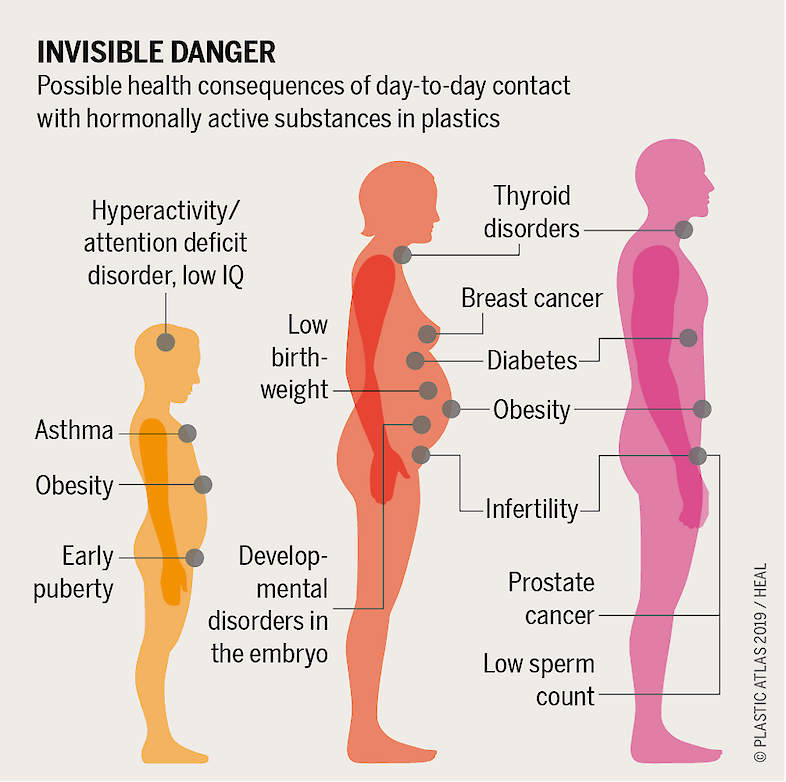Plastic pollution: A menace?
Adetutu Adebayo ·I grew up seeing almost everything in the grocery stores wrapped in plastics, from bread to detergents, to syringes used for medicine injections, to cookies and clothes! We are surrounded by plastics and use them in our everyday activities. Plastics are made through a polymerization process by combining different natural materials such as natural gas, crude oil, cellulose, coal, and salt. At the onset, it seemed like an innovative approach providing employment, fascinating packages for goods, and economic opportunities, but it soon became a menace due to inadequate/lack of adequate waste management techniques, too rapid industrialization with microplastics and PFAS (Per- and polyfluoroalkyl substances) seeping into foods and causing adverse effect on humans’ health and the environment in general.
Plastics as an emerging contaminant
Plastics are widely used in different continents of the world and are becoming an emerging contaminant. One of the key factors affecting plastic usage is very rapid production and lack of effective waste management. In many countries such as Indonesia, Nigeria, South-Africa, and many others, there are no efficient structural waste disposal systems, and plastics are either burned or thrown into the sea, with up to 31% of waste remaining uncollected by municipal services. Plastics accumulate over time and become a nuisance to society and the environment.

The extent of plastic pollution in some locations in Malaysia. Source: Goh et al., 2022.
From the figure above, one can begin to wonder if there is so much plastic accumulation in some parts of the country, how might it be in the rest of the country and the world at large!
Plastics accepted by society?
The usage of plastics has become a norm in society, being widely acceptable and an expected behavior in society, while other types of packaging are rather seen as old, “unfashionable”, or not durable. This may be due to lack of awareness of the implications or seeking for a life of convenience by the majority. Although, it is not as if humans are not aware of the negative impacts of plastic pollution, but It seems the level of concern is not yet high enough, so it is not a priority.

Plastics in everyday usage. Source: Photo by Noweatrom Hofgd 2019 is licensed under CC BY-SA 4.0.
Implications of plastic pollution
- Brent Walls, the Upper Potomac Riverkeeper, explained that plastics contain Per- and polyfluoroalkyl substances (PFAS), a group of chemicals that don’t break down easily, leak through the packaging to the food and cause different health diseases such as cancer, direct damage to the lungs, the gut, the cells of the body, liver diseases, fetal malformation, thyroid problem, hormone disruption, harm to the reproductive systems and lots more. Research has shown that the smallest plastic particles can possibly cross the blood-brain barrier and cause damage to the brain. No wonder there's been an increase in the number of incurable diseases.

- Microplastics (wastes from companies during plastic pollution or broken parts of plastics) drain into the oceans, become ingested by aquatic animals, cause death of aquatic organisms, and change the composition of the water bodies.
- Land animals, such as free-range goats, may ingest plastics that can wrap along their intestines. This may lead to death if surgical operations are not quickly carried out.
- Plastic items and fragments also serve as carriers for pathogens, viruses, and parasites through contamination and provide habitats to insects carrying diseases.

Is there a way out?
Yes, there are several ways of reducing plastic pollution such as:
- Reducing over-dependence on plastics and using alternatives to plastics: Usage of plastic bags should be reduced. Alternatives such as paper bags and garbage cans should be provided. The packages should be produced in an attractive pattern that will be generally acceptable by the community.

- Scientific Research: Effective and systematic research is needed to describe how well enough people are informed about the implications of plastic pollutants over the globe and for all age groups. Researchers need to come together to formulate working research to publish the impacts of this menace on human health and the environment, in general, to increase understanding and knowledge among the public.
- Funding: The government and respective stakeholders (both private and public) should work together to release funding for researchers. Money is one of the engines that pilots efficient and effective research. Nicole Trenholm talked about the Ocean Research Project's Chesapeake Bay Plastic Survey which aims to establish a baseline for monitoring plastic pollution trends in the Chesapeake Bay. This will help to know the concentrations of plastic in the water, enhance understanding, and inform future efforts. Releasing funding for this kind of research will save the world a lot of further damage to the planet.
- Public awareness, sensitization, and engagement: The public should be sensitized and made aware of the various risks associated with overuse of plastics. They should also be involved in making reasonable decisions to reduce plastic usage. Their voices should be heard, and their opinions should matter.

- Policy formation: Policies should be made to reduce plastic production and enforce usage of alternatives to plastic, with stringent penalties attached to non-compliance.
Conclusion
With all the negative implications of plastic usage and its associated health and environmental challenges, do you think plastic pollution is really a menace? If yes, what further ways can its usage be reduced and what are you doing about it? Remember, the change begins with you!
References
- Goh HC, Kuit SH, Mohamad Ariffin WNSW, Richter I, Johari S, Lee KH. (2022) Coastal litter audit in Tun Mustapha Park, Malaysia, with capacity building in mind, Marine Litter News 14(2): 21–25.
- Sekito T, Matsuyama A, Prayogo TB, Dote Y (2020): Factors influencing the period of participation in a waste bank system in Malang City, Indonesia, J Mater Cycles Waste Manage 22(5):1614–1619.
- Thiel M, Hong S, and Jambeck JR, (2017) : Marine litter—bringing together citizen scientists from around the world. In Cigliano JA, Ballard HL, editors: Citizen science for coastal and marine conservation, New York, 2017, Routledge, pp 104–131, Creative Commons BY-NC 4.0 license.
- Voronkova A., Richter I., Henderson L., Aruta JJBR., Dumbili E., Wyles KJ., and Pahl S. (2023). Plastic pollution in the Global South: Exploring social, behavioral, and structural factors. Oceans and Human Health. Chapter 14. https://doi.org/10.1016/B978-0-323-95227-9.00011-7
About the author
Adetutu Adebayo

Adetutu is a first year PhD student at UMES. Her research will focus on quantifying the diet of Grass Shrimp in Maryland Coastal Bays using traditional and metabarcoding approaches. She enjoys reading literatures and relaxing in her free time.
Next Post > Protecting Our Waterways: What You Should Know About Harmful Algal Blooms
Comments
-
Ian Kalama 1 year ago
I enjoyed reading the blog. Great work!
Simple, yet so engaging and informative. -
Alison Novara 1 year ago
Adetutu, amazing blog! I thought your images and graphics were perfect and really helped to showcase exactly what you were discussing in the above paragraphs. They kept me excited to keep reading and were great to visualize the effects of plastic that you mentioned. Very good points about what we can do moving forward regarding plastic usage, you covered a broad range of solutions and how both citizens and the government can help! Great job!
-
Jun Suk Byun 1 year ago
Thank you for the well thought out information Adetutu! Yes the focus should be on REDUCING plastic, not recycling. Information on microplastics and ocean waste should be constantly sent out to the public so that we can make a change. Nice work covering this issue!
-
Ronita 1 year ago
Hi Adetutu, I like how your blog highlights the pervasive impact of plastic pollution on health and the environment, urging a shift towards sustainable alternatives, increased public awareness, and collaborative policy-driven solutions to combat this growing menace. Nice work!

